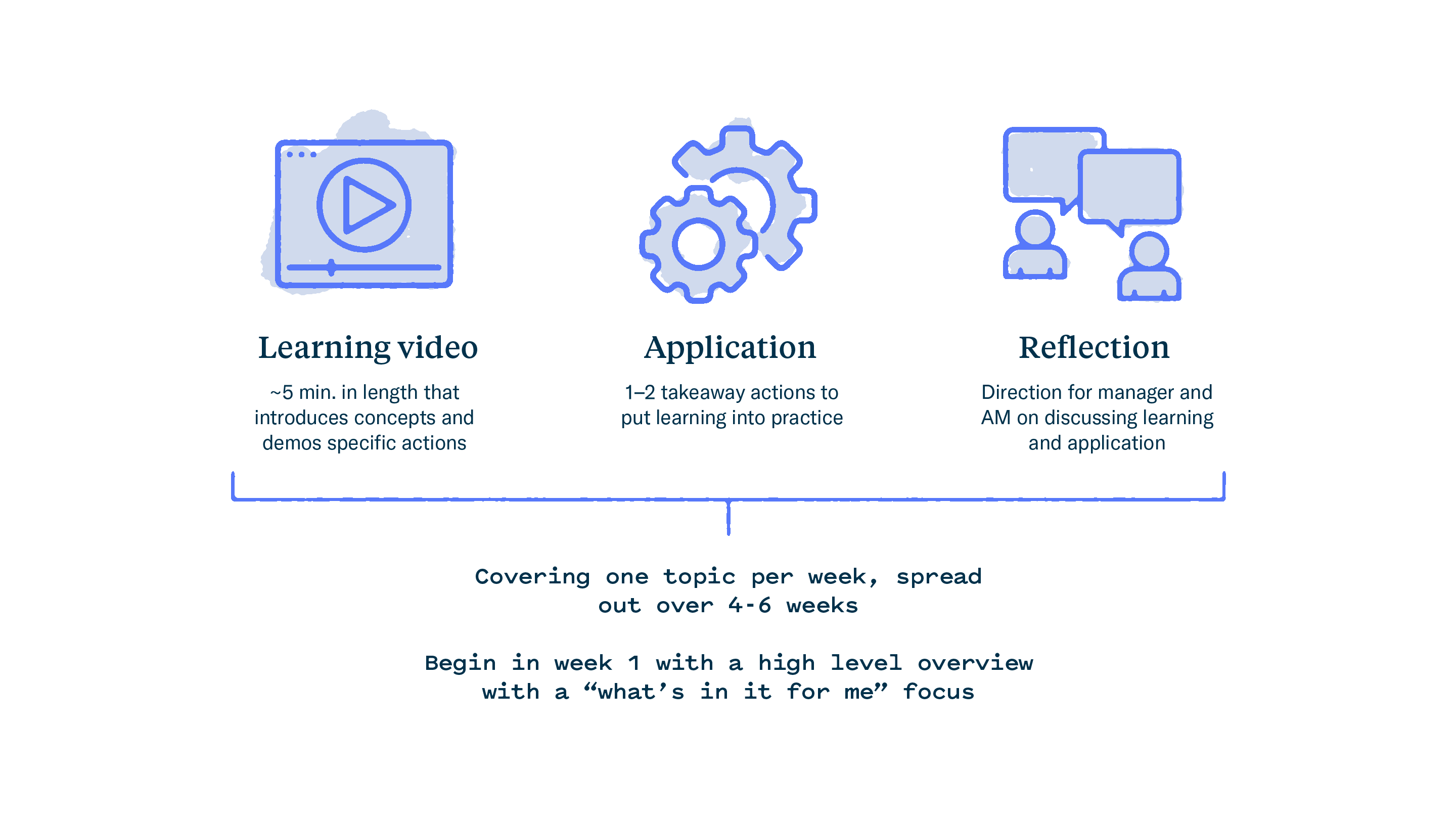As the structures that hold the world together change shape, so too must our approach to learning. Today, innovative learning technologies like VR, AR, XR, and MR (all the R’s!) are quickly gaining momentum, challenging tried and true ILT (instructor-led training) techniques. But how do learning professionals navigate such a shift in the learning landscape? How do they retain the human touch of in-person instruction while also harnessing the unique opportunities of new technologies? And how do they avoid confusing or overwhelming their learners in the process? The answers lie in something called blended learning. But what is blended learning, exactly?
Blended learning definition
Ultimately, blended learning is the intentional integration of various learning delivery methods to create the most effective learning experience for a given situation.
While some people interpret blended learning as a simple equation—traditional ILT methods + newer eLearning methods—it’s a bit more than that. Think of it like a smoothie. There are a million and one possible flavor combinations, but smoothies all have one thing in common: they’re made with more than one ingredient.
In this Leading Learning podcast episode, eLearning coach Connie Malamed answers the question “What is blended learning?” by describing a process of “pulling together many different approaches, the best approach for each performance objective, and pulling them together into a blended learning package or curriculum.”
So, roll up your sleeves and get out the fruit, because you’re about to start blending.
The Blended Learning Playbook: Designing Experiences That Create Change
One of the best parts about blended learning is the creative freedom it gives learning leaders. But if you try to incorporate too many learning elements, you run the risk of confusing or overwhelming your learners. In this guide, learn how to design blended learning experiences that are strategic, effective, and create change in your learners.
Get the guide→Benefits of blended learning
To a learning leader, blended learning means complete creative freedom to serve their learners in the most effective and meaningful ways. Unlike the chalkboard lectures of yesteryear and the virtual fun house of tomorrow, blended learning has few structural limits. And, when it’s designed well, it can supercharge your learning experiences.
Learner-focused
Learning should meet people where they are; there is no one-size-fits-all. Blended learning allows you to focus on the learner like never before. If you know your learners are extremely busy and only have a few minutes a day to dedicate to learning, you might craft a unique blend of microlearning video modules with short quizzes, and then pull it all together with a biweekly discussion. Or maybe your learners are newer to technology. If that’s the case, you might employ more ILT delivery methods, throwing in some collaborative eLearning methods like interactive presentations along the way.
Adaptive approach
Learning is a process. You can’t expect your learners to perfectly understand and apply new material after watching one video. When you take a blended approach, you have the freedom and flexibility to adjust your strategy in ways you simply can’t with single delivery methods.
When you combine your blended instruction with the Tell, Show, Do, Review framework, you’re able to curate every element of your learning experience to best address not only the performance objectives but also the stages of the learning process. For instance, if your learners are in the Do stage, you’d probably want to craft an experience that involves, well, doing something. What that looks like is up to you. Maybe it’s a role-playing exercise. Or a simulation. Or something else entirely. The choice is yours.
Deeper dives
Harnessing the best of multiple learning delivery methods also allows your learners to dive deeper into the material. Live demonstrations that once took place at the front of a classroom can become a choose-your-own-adventure story in a virtual world that is then followed up by an in-person discussion. Or a video series of animated tutorials can be reinvented as a live demonstration that involves real learners getting to test their new skills in real-time. The possibilities are endless.
Beware of over-blending
As you begin to experiment with blended instruction, eager to meet your learners’ needs in the best possible way, it may be tempting to over–blend. But if you try to incorporate too many delivery methods, you run the risk of confusing or overwhelming your learners. Here are a few things to keep in mind when curating your learning experience.
Each learner has a specific cognitive load they can bear before they throw in the towel. If they dedicate too many cognitive resources trying to navigate the framework, they’ll have fewer resources to spend on learning the material.
In the same vein, make sure your learners know what they’re expected to do at each stage of the process. If they’re guided to engage in a discussion after watching a video, make sure they know how and when to access the video, and then how and when to engage in the discussion.
And finally, when you blend different learning delivery methods, make sure there’s a purpose behind your choices. It might be tempting to arrange a smorgasbord of learning techniques because they’re all just too tasty to leave out, but remember that your learners’ appetites are different than your own. If you’re ready to start curating your own blended learning experience, resources like our Learning Ecology Matrix are a great place to begin.
Designing a blended learning experience
When we designed a learning experience to develop managers into effective leaders for Johnny’s Markets, we were inspired by the Tell, Show, Do, Review framework. We spent a month gathering information about their learner audience and then used that information to craft a unique blended learning experience, incorporating a variety of learning delivery methods to meet the learners where they were at each stage of the learning process.

For these particular managers, who were juggling background and front-line duties, our approach included short, high-production videos, takeaway actions, and reflection opportunities, broken down into one topic per week.
What blended learning means for you
If you’re a leader looking to support your learners with customized experiences throughout each stage of the learning process, blended learning is the handiest tool in your belt. Not only does it allow you to dive deeper into your material and adapt your approach in ways you may have only dreamed of before; but it also allows you to truly resonate with your learners, creating meaningful change and growth.
Ready to take your learning experience to the next level?
Our Blended Learning Playbook helps you structure your blended learning experiences step-by-step.
Start designing→